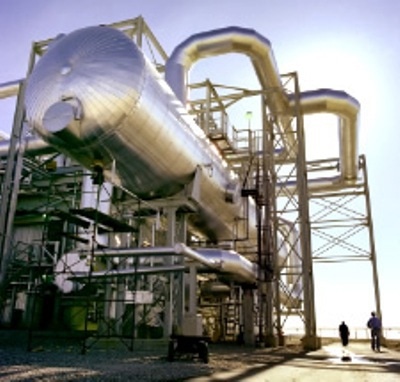Duplex stainless is a mixed microstructure of austenite and ferrite (50/50) which has improved strength over ferritic and austenitic steel grades with similar corrosion resistance qualities.

One of the main attractions of duplex stainless steel is cost – due to the materials increased yield strength it is often possible to reduce the thickness of material making it much cheaper than a comparative austenitic stainless steel grade. Also Duplex steel has a lower alloy content reduces production costs. Certainly cost and weight savings without loss of performance is an attractive proposition to purchasers.
Benefits of using UNS32205 Duplex Stainless Steel
Benefits of using UNS32205 Duplex Stainless Steel include:
- Corrosion resistance better than that of Type 316
- Greater tensile and yield strength
- Good ductility and toughness though not as good as austenitic grades
- Good stress corrosion cracking resistance (SSC)
- Opportunity for purchases to reduce their material costs without compromising on quality
About 2205 Duplex Stainless Steel
2205 is the most common duplex alloy which contains 22% chromium and 5% nickel. Please refer to the chemical composition and mechanic properties tables below.
Chemical Composition of UNS32205 Duplex Stainless Steel
The chemical composition of UNS32205 Duplex Stainless Steel is provided in the table below.
| UNS No |
Grade |
C |
Si |
Mn |
P |
S |
Cr |
Mo |
Ni |
N |
Other |
| S32205 |
2205 |
0.030 |
1.00 |
2.00 |
0.030 |
0.020 |
22.0/23.0 |
3.0/3.5 |
4.5/6.5 |
0.14/0.20 |
– |
Mechanical Properties of UNS32205 Duplex Stainless Steel
The mechanical properties of UNS32205 Duplex Stainless Steel are provided in the table below.
| UNS No |
Grade |
Proof Stress
0.2% (MPa) |
Tensile Strength
(MPa) |
Elongation
A5(%) |
Hardness Max |
| HB |
HRB |
| S32205 |
2205 |
450 |
620 |
25 |
293 |
31* |

This information has been sourced, reviewed and adapted from materials provided by Masteel UK Ltd.
For more information on this source, please visit Masteel UK Ltd